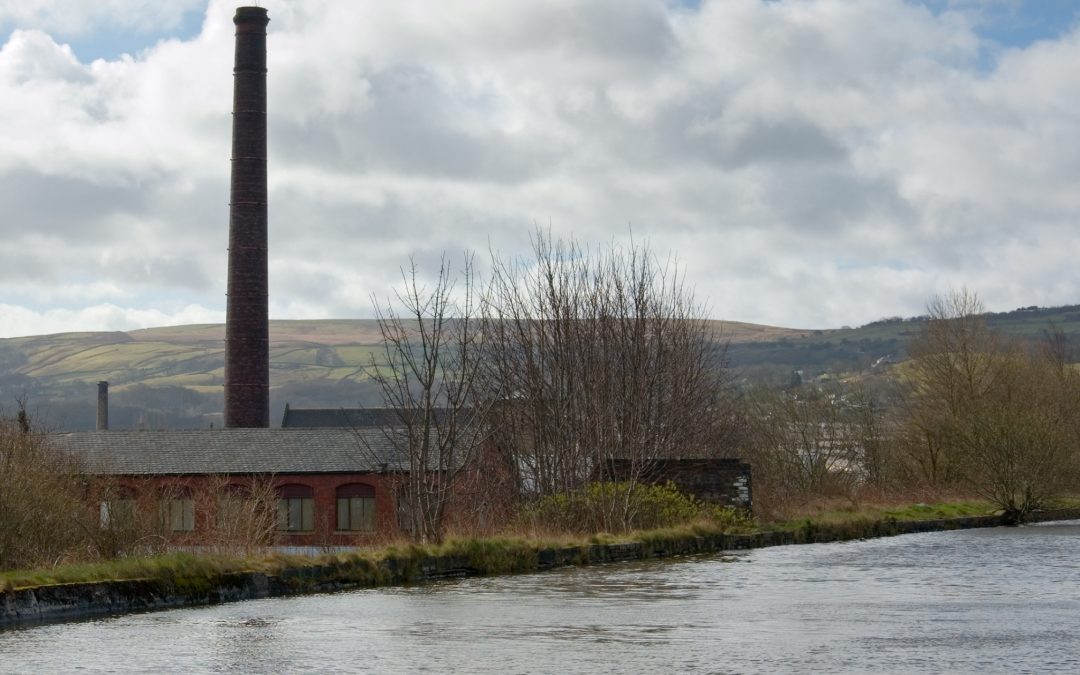In the heart of the Industrial Revolution, Stockport’s water power sites were a boon. Their strategic location and natural resources became pivotal for 18th-century cotton processing. It’s not just a tale of historic significance, but a testament to the power of nature harnessed for innovation.
These water power sites offered a wealth of advantages. They were the lifeblood of the cotton industry, providing reliable, sustainable energy. It’s a story of how Stockport’s unique geographical features played a crucial role in the rise of a major industry.
Today, we’ll delve into the specifics of these advantages. We’ll explore how the power of water transformed Stockport into a hub for cotton processing. It’s a journey back in time, shedding light on the ingenuity of our ancestors and the lasting impact of their achievements.
Strategic Location of Stockport’s Water Power Sites
Positioned advantageously within the UK, Stockport emerged as a powerhouse during the Industrial Revolution. Its well-placed position near the convergence of the Tame and Goyt rivers, both significant tributaries of the River Mersey, offered immense benefits for the cotton industry.
Nestled in the heart of England’s textile belt, Stockport’s location was key to driving its booming cotton processing industry. The region’s topography with its undulating landscape and watercourses rendered it an optimal environment for harnessing water power. Water power sites essentially became the lifeblood of the area’s thriving cotton industry.
The intrinsic advantage of being in Stockport was the ease of driving massive waterwheels – pivotal to cotton processing in the 18th century. The rivers served as a constant, consistent source of motive power. Even during periods of drought, the ample reservoir systems ensured the continuity of power supply to the mills and factories. This reliable source of energy combined with the area’s natural landscape was, without a doubt, instrumental in fuelling Stockport’s Industrial Revolution.
Beyond their function as power source, the rivers also facilitated transport routes for raw material delivery and finished product distribution. The Mersey and Irwell Navigation, for instance, supported the exponential increase in trade of processed cotton and textiles. It’s this well-connected river system which helped Stockport build a robust cotton export network.
Stockport’s geographical features and water power sites not only fostered industry development, but moulded the evolution of its entire society. Factories sprouted across the landscape, shoe-horned into every available nook and cranny by the riverside, contributing in no small measure to the region’s urbanisation.
Such a prosperous narrative of an innovative past serves as a testament to Stockport’s powerful geographical attributes. A prime example of exploiting natural resources, it emphasises that location is indeed a strong influencer, possibly a determinant, in the economic trajectories of regions. It also sets us thinking about how we might be able to use our resources today to create sustainable, reinforcing economies in a manner as natural as the flow of the rivers in Stockport.
Abundance of Natural Resources for Cotton Processing
One of the most integral aspects to the rise of Stockport during the 18th century was the sheer amount of natural resources present in the area. As an area rich in water power sites, it gave the cotton processing industry a significant advantage.
Among these natural resources, rivers were a central figure. They naturally offered key mechanisms for powering cotton factories, including water wheels. Their steady water flow provided a consistent wave of power, ideal for the rigorous demands of cotton processing mills.
It’s no surprise that the greatest concentration of mills was along the River Mersey and its tributaries. They offered a supply of energy that was not only abundant but also sustainable over time. This consistency meant that mills could operate with a level of assurance that would have been impossible on land-based power alone.
Moreover, raw materials such as cotton could easily be transported via these waterways. The rivers acted as major arteries, moving goods efficiently from the interior to ports, where these could be shipped nationally and internationally. This ability for quick and easy transport provided Stockport with a distinct advantage when it comes to logistics and manufacturing timescales.
While we’re primarily focusing on water power sites, it’s also worth noting Stockport’s richness in coal reserves. These reserves were essential during periods of water shortage. They were a means of ensuring that the mills, and thereby the cotton industry, could continue to function, underpinning economic stability and growth.
Any discussion of Stockport’s natural resources would be incomplete without mentioning the people factor. The area was home to a large number of skilled workers, trained in the machinery and processes used in cotton mills. This human capital added another layer of sustainability and security to Stockport’s cotton industry.
The array of natural resources that were available in Stockport during the 18th century – both physical and human – made it the perfect breeding ground for the cotton processing industry. This same wealth of resources also gives us insights into how locations can strategically leverage their natural assets for sustained economic development. With careful planning, these resources can be used responsibly, ensuring the prosperity of the local economy while respecting the natural environment.
Reliable and Sustainable Energy Source
The 18th century saw a remarkable convergence of factors that led to Stockport’s rise as a cotton processing powerhouse. Among these, it’s the innovative use of water power that truly stands out. The River Mersey and its tributaries, teeming with a steady flow of water, were harnessed extensively, delivering an unrivalled force for running the mills.
These water courses were the lifelines of the burgeoning cotton industry in Stockport. They essentially served as the town’s natural power grid, providing a continuous, dependable source of energy. This is because, in stark contrast to other energy sources accessible at the time, water wheels do not need re-fuelling or winding up. Thus, this energy source was, in many ways, more resilient and self-reliant. Visibly, water wheels carried the day.
Another noteworthy advantage of harnessing water power was its sustainability aspect. Utilising river currents for powering mills left virtually no deleterious impact on the environment. While industries elsewhere were depleting resources and churning out pollutants, Stockport navigated toward a far more sustainable path. In stark contrast with the broader narrative of the Industrial Revolution, the place resonates with an understated yet clear inclination towards eco-conscious initiatives.
It’s important to mention though, that contingency measures, such as coal reserves, were also in place. These ensured operational continuity during those rare instances when water courses ran low. Consequently, Stockport’s economic stability was maintained, avoiding all those telltale signs of energy insecurity other regions experienced.
To sum up, Stockport stands as a stellar example of how to effectively utilise a natural, renewable and local energy resource for industrial progress. This delicate balance between industrialisation and preservation of natural resources is a lesson we all could learn from the town’s history.
Geographical Features that Facilitated Cotton Industry Growth
Stockport’s favourable geography played a significant role in the development of its cotton processing industry during the Industrial Revolution. The town sits on the banks of the River Mersey, and its tributaries wind through the region. This abundant, flowing water resource was cleverly harnessed for numerous industrial applications.
One of the most significant geographical elements was the city’s efficient water power sites. Stockport’s river systems presented an endless source of potential energy harnessed through specially designed water wheels. These wheels were at the heart of cotton mills, providing the mechanical power that kept machines humming and producing cotton at unprecedented rates. It’s no surprise then that numerous water-powered mills dotted the heart of Stockport.

The Advantageous Role of River Mersey and its Tributaries
The River Mersey’s consistent flow and vast tributary network were the backbone of Stockport’s cotton mills. These consistently flowing waters powered the large water wheels required for large-scale cotton production.
In addition to water power, Stockport’s unrivalled accessibility was another geographical feature that advantaged the cotton industry’s growth. Nestled in the northwestern part of England, the town had easy access to both the key coal reserves – essential for heating and numerous manufacturing processes – and the bustling ports of the region. This prime location facilitated the easy transportation of raw materials into the town and finished goods out of it, thereby boosting economic growth.
Moreover, the Mersey Valley’s natural topology offered ideal sites for the construction of mills. With plenty of elevation change, optimal conditions were created for the utilization of water power, further propelling the industrial might of Stockport.
Blithely merging sustainability and productivity, Stockport’s geographical features indeed played a pivotal role in shaping the town’s industrial legacy during the cotton processing industry’s boom. Pursuing today’s eco-conscious agreements, modern industries have much to draw from this early example of sustainable industrial growth. The balanced use of renewable and non-renewable resources highlights the city’s testimonial of industrial collaboration with nature. Stockport’s industrial history isn’t just about progress – it’s a timeless paradigm of eco-aware and balanced growth. It stands as a testament to utilising geography for industry, and the value of renewable energy.
Impact of Water Power on Stockport’s Development
In the Industrial Revolution era, Stockport’s terrain wildly transformed. A town once quietly nestled in the Mersey Valley suddenly burgeoned into a hive of activity. The most remarkable aspect of this growth, I found, was the way it optimally used the natural resources available.
Stockport’s abundant stream of rivers and tributaries was exploited to set up several water-powered mills. Strategically located, these mills harnessed the consistent water flow from the River Mersey, pushing the town to the forefront of the cotton processing industry. Interestingly, the geography that Stockport inhabited made the town a prime candidate for this transformation. The Mersey Valley provided just the right slope and flow rate for constructing efficient mills.
The water power was not only used to run these mills but also played a pivotal role in transporting goods. Stockport’s rich coal reserves and proximity to ports made transportation of raw materials and finished goods easier.
I must emphasise, it’s not just the efficient use of natural resources that set Stockport apart. It’s how this town blended sustainability with productivity, demonstrating an early understanding of eco-conscious industrial growth, a model that is still relevant in today’s world. Stockport managed to strike that balance between harnessing nature’s bounty and preserving the environment, a delicate equilibrium that many modern industries strive for.
What Stockport accomplished centuries ago is particularly inspiring as we grapple with the urgent need to transition to renewable energy sources. By illustrating how a sustainable and balanced approach to industry can spur growth, Stockport offers a compelling blueprint for the future.
Conclusion
Stockport’s efficient use of water power during the 18th-century cotton processing boom is a testament to its ingenuity. It’s a classic example of how nature’s resources can be harnessed for industrial growth. The town’s strategic location and abundant water sources made it a thriving hub during the Industrial Revolution. The success of Stockport’s water-powered mills serves as a reminder of how renewable energy sources can be optimised for productivity. It’s an inspiring model for modern industries aiming for sustainable growth. As we look back, we can draw valuable lessons from Stockport’s blend of sustainability and productivity, applying them to our current efforts to transition to renewable energy.
Stephen F is the publisher of this website, he is a long term resident of Stockport. Over the years he has explored every area within Stockport from the Merseyway Shopping Centre to the Etherow Country Park trails.
He can often be found on a lazy Saturday morning frequenting one of Stockport's many coffee shops sipping his favourite latte.
One of his big passions is to go for long country walks with his pet golden retriever Lottie.
One thing is certain he knows Stockport!

